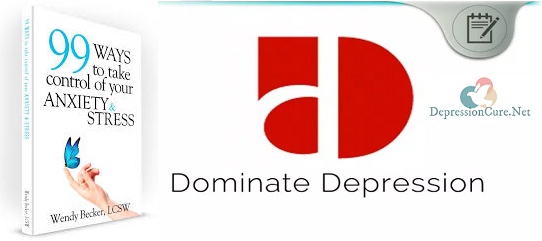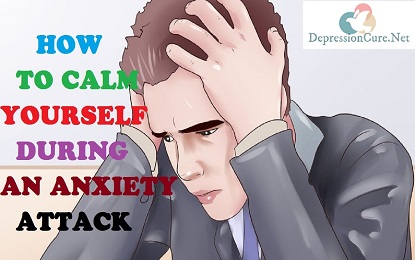Introduction
Social anxiety is one of the most common disorders of 2018. It affects around 13% of Americans. Many people believe they have social anxiety, but rather they just have some form of moderate to severe shyness. There is a difference between social anxiety and shyness. The following article will help dispel some of the confusion. In the end, the following checklist should help you figure out if you actually have social anxiety. (Do I Have Social Anxiety)
Click Here To Read: 20 Ways About How to Calm Yourself During an Anxiety Attack
If you do determine that you do have social anxiety, then do not worry. The first step of overcoming social anxiety is recognizing that you have it. Many people spend their whole life avoiding social situations and never living up to their full potential because of severe and crippling social anxiety.

1. Fear of social situations
The most common manifestation of social anxiety is an intense fear of social situations. This goes beyond a fluttery feeling before any type of social situation, which is fairly common and perfectly normal. People with social anxiety fear social situations so much that they actively avoid any type of social situation.

An example of the type of fear social anxiety induces would include avoiding social situations, parties, job interviews, or dates. People without social anxiety might feel a little nervous before a date or a party, but they manage their anxiety and go to the social occasion.
A socially anxious person might RSVP to a party, but then end up not going. This withdrawal only leads to further social isolation as the person slowly stops receiving invitations to social events. (Do I Have Social Anxiety?)
2. Tremors during social interactions
Another slightly less common symptom of social anxiety are tremors during social interactions. Shaking hands are normally caused by some form of nervousness or anxiety. An example of tremors not from social anxiety would be a criminal talking to the police.

On the other hand, a socially anxious person would have the same tremors (usually shaking hands) when talking to another person or at a social event. The shaking hands often lead to questioning by peers, which only increases the anxiety of the socially anxious person.
Click Here To Read: 20 Ways to calm your mind – How to calm your mind
3. Your face blushes
A blushing face is another one of the positive symptoms of social anxiety. Again, this is not just the occasional face blush during a particularly embarrassing. This refers to face blushing during a relatively innocuous conversation with a person.

Similar to hand tremors, face blushing will often cause peers to question why your face is blushing. This often leads to embarrassment and only furthers the cycle of social anxiety and social withdrawal. (Do I Have Social Anxiety?)
4. Negative thoughts and biases about social situations
Social anxiety does not only have physical symptoms. The cognitive symptoms of social anxiety make overcoming social anxiety very difficult. The two biggest mental symptoms of social anxiety include negative thoughts and self-doubt about social situations.

Negative thoughts usually manifest as a negative evaluation of your performance in social situations. An example might include giving a presentation and having thoughts such as ?My voice will shake? or ?I hope no one sees my hands shaking.?
These thoughts then get out of control and further the anxiety. Oftentimes the thoughts will get so out of control that they cause more anxiety, which in turn causes the symptoms that the person was hoping to avoid.
A negative bias of a social situation is a little different than a negative thought. A bias would normally manifest as a thought such as ?I’m so bad at social situations. Everyone else is so much better.?
As you can see, the first sentence of that thought is a negative bias about oneself. However, the negative bias will also implicitly overestimate the strength of others.
Similar to negative thoughts, a negative bias will usually create a cycle of anxiety. A negative bias will also make receiving help for social anxiety more difficult over time as the socially anxious person’s self-esteem begins to slowly erode.

5. Social Avoidance
Social avoidance was touched on under social fear, but social avoidance goes further than just fear and general avoidance. Avoidance includes actions that negatively impact your life.
An example of avoidance with a negative impact includes not taking a job promotion because of fear of more social interaction. Other examples could include avoidance of job interviews, dates, or activities that imply social interaction such as group bike riding or jogging.

The social avoidance may come from fear, but more often than not the fear comes from negative thoughts and biases about social situations. The negative thoughts cause the fear, which then causes the avoidance. Too much avoidance can often lead to a life that spirals out of control, and that leads to even more issues beyond social anxiety. (Do I Have Social Anxiety?)
Final Thoughts
Those are five symptoms to help determine if you have social anxiety. Overall, the biggest determinant of social anxiety is not necessarily a fear of social situations. Fear of social situations is a relatively common phenomenon; public speaking is the greatest fear of the general population.
Rather, the biggest determinant of social anxiety is a pattern of avoiding social situations. However, avoiding social situations does not fully justify social anxiety. The avoidance must be pervasive enough that it results in severe negative consequences to your life.
Click Here To Read: 15 Scientifically Proven Ways to Be Incredibly Happy – How To Be Happy
Social anxiety does not just manifest itself in behavioral ways though. It also has physical symptoms too. Some of the physical symptoms include face blushing, hand tremors, nausea, and cold sweats. These symptoms will only appear during social situations. However, the symptoms may even occur when a socially anxious person simply thinks about a potential interaction.
Overall, the symptoms of social anxiety all relate to each other. Negative thoughts and negative biases will cause fear, which will cause avoidance. Fear also will cause the physical symptoms. Eventually, the symptoms form a vicious negative feedback loop. This results in further social isolation and social avoidance.
The goal of recognizing the symptoms is to stop the negative feedback loop and work toward being comfortable in social settings.
Note: Depression Cure does not provide any type of medical advice, diagnosis, or treatment.
(Do I Have Social Anxiety?)
This article by Sophia Trunzo is originally published at SundayScaries.





